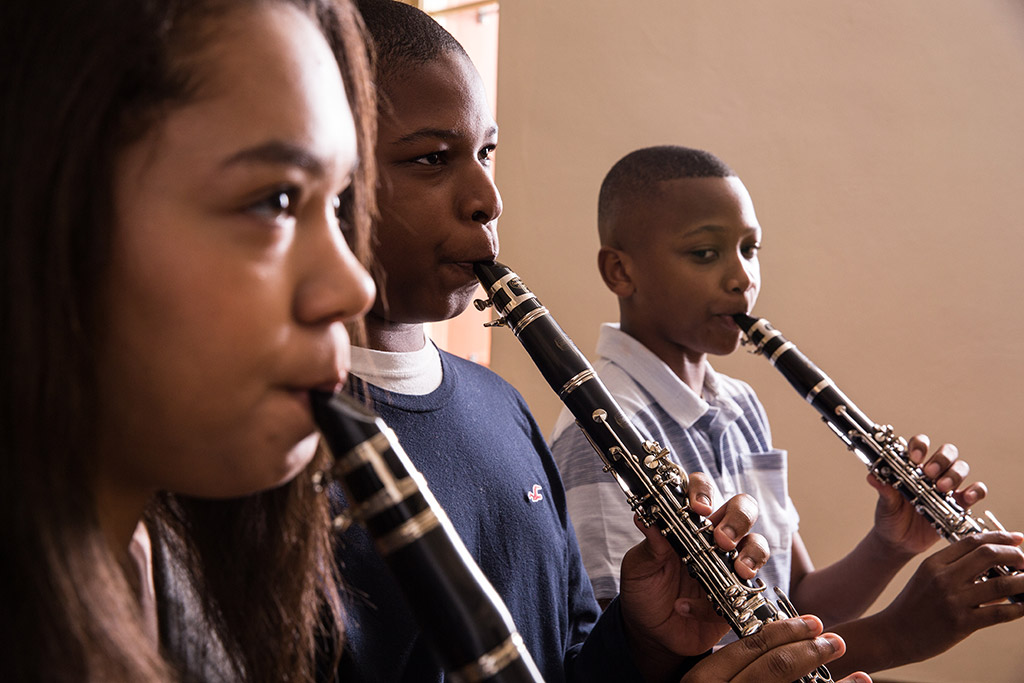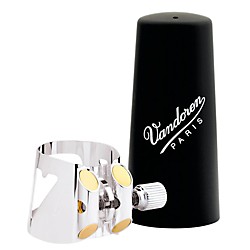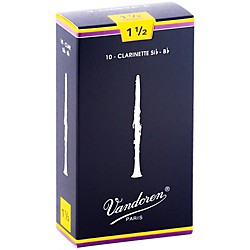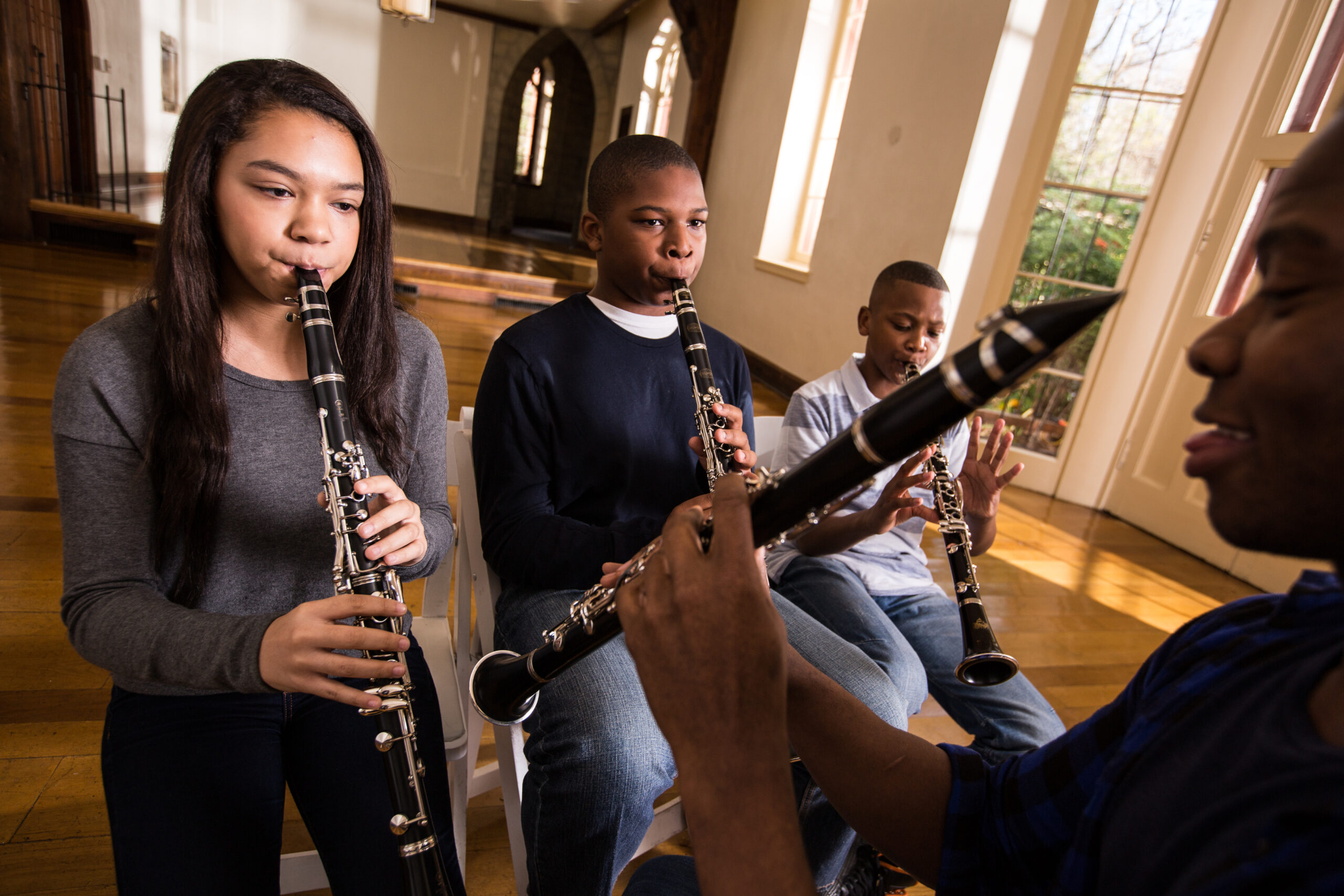July 24, 2015
Clarinet Advice for Beginners


While the clarinet is a fun and versatile woodwind instrument to play and learn, the process can be challenging and confusing, especially for those who are new to the instrument. Whether you feel out of breath when you play, aren’t sure how to maintain or clean your instrument, or are confused about breaking in reeds, we’ve put together a list of helpful clarinet advice for beginners. If you’re having a particular problem that isn’t covered on this list, speak with your music educator for personalized advice.
What Equipment Do I Need?
When it comes to actually playing the clarinet, there are a few essential pieces of equipment every clarinetist needs: reeds, ligatures, and mouthpieces. If your clarinet came with a stock mouthpiece, it’s a good idea to eventually upgrade to a quality mouthpiece that provides the sound you’re looking for. Similarly, try to eliminate all stock ligatures. A cloth ligature gives more control than a metal one, so most music educators recommend that their students transition into playing with metal ligatures in order to open up the sound. Finally, the strength of the reed should be determined by the mouthpiece. While a “3” may be the most common, it’s not the strength for everyone. Once you’ve found a mouthpiece,speak with your music educator for advice on which reed strength is right for you.


How Do I Improve Embouchure?
Proper embouchure doesn’t happen overnight. It’s a critical, often overlooked, aspect of performing and involves the right coordination between the upper lip, lower lip, teeth, and chin. To get started, drop your jaw to the point where it’s relaxed but not forced open, and move your jaw slightly from side to side to loosen it up. Once your jaw is fully relaxed, roll the bottom lip slightly over the lower teeth while firming up the corners of the mouth and bringing them forward and in, almost as if you’re smiling. Place your index finger against the space between the top teeth and, with your upper lip, press downward onto the finger. (Note: your chin should automatically point downward in reaction to this.) Remove your finger, don’t move a thing, insert about one fourth of the mouthpiece into your mouth with your upper teeth resting on the mouthpiece and voila! You’ve perfected embouchure.
What About Reeds?
Finding the right clarinet reeds and properly maintaining them is crucial to successfully playing the clarinet. Choose reeds that are appropriate for your mouthpiece and blowing pressure, and avoid wetting your reeds with saliva, as the enzymes and acids found in saliva can be detrimental to cane. When opening a new box of reeds, don’t test them all at once. Eventually your lip will desensitize and your impression of the reeds won’t be accurate. The breaking in process should be slow and steady; instead of trying to break them in throughout the course of one day, play them for a few minutes each day until they’re worn in. As far as cleaning and maintenance goes, rinse reeds in water when you’re finished playing and dry them with a soft cloth before storing them on glass. Finally, the best way to learn how to adjust reeds is through trial and error- speak with your clarinet teacher for advice on adjusting reeds.


Any Advice for Practicing?
Unfortunately, many new clarinet players are completely misguided when it comes to practicing. They think that the amount of time spent practicing the clarinet is more important than how they spend that time. For example, one hour of efficient practicing is more productive than three hours spent practicing in front of the television. Your practice time should include a good mix of warm-ups, sheet music you enjoy,, and working on technique. As a new musician, it can be difficult to keep up the technical side of things, so be sure to spend a chunk of your practice time on technique- no matter what. While every practice should start with a warm-up, you can switch between technique and sheet music as you see fit. For more tips on practicing, check out How to Make Your Practice Time Count.
I’m Having a Bad Day…Now What!?
We all have bad hair days, but did you know you can have a bad clarinet day, too? The truth is, there will be some days where practicing is difficult and frustrating. When you’re having a bad clarinet day, don’t stress out about it. Instead of forcing yourself to run through scales or technique exercises, just pick up your clarinet and play through some of your favorite songs. Chances are, if you spend some time playing what you want to play, you’ll get into the flow of playing quicker than you thought you would. If you become too frustrated, put your clarinet down and skip your practice session for that day. Just remember: learning to play the clarinet isn’t always the easiest thing in the world: there will be good days, and there will be bad days. Just stick with it and your determination will pay off in the long run.
For more information about the clarinet, learn How to Get The Best Sound on the Clarinet and check out The Most Common Mistakes Made by Clarinet Players.






